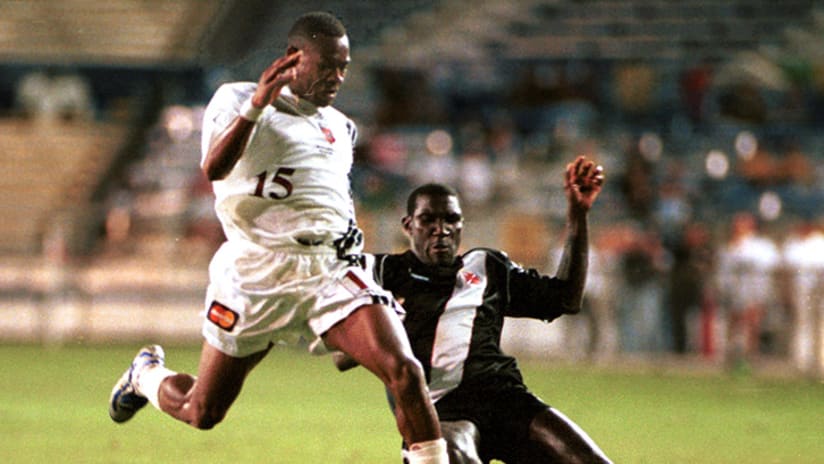The Lassiter legacy is undisputed.
Though sometimes forgotten – and wrongfully so – among the flux of prolific goalscorers in the league’s recent history, his story stands on its own. He was the first. And for the longest time, he couldn’t be touched.
But the truth is, it’s a story that almost never happened.
Lassiter broke his leg at his first U.S. Men’s National Team camp in 1992, shortly after finishing an outstanding collegiate career at North Carolina State. While still in recovery, he recalled being courted by and eventually signing with Carmelita, a small club in Alajuela, Costa Rica.
“I have no idea how they got my name,” he told Soccer America Magazine. Off the heels of his rehabilitation, he scored 7 goals at the end of the 1993 season, enough to catch the eye of Costa Rican powerhouse C.D. Alajuelense, who signed him in 1994.
He went on to finish second in the Costa Rican league’s goalscoring leaderboards (17) around the same time that buzz about a professional league in the U.S. had started to grow. After capturing the Costa Rican title in 1996, Lassiter’s golden boot was primed for a new challenge—one that would bring him back to the States where a new league was about to kickoff.
Lassiter led the Tampa Bay Mutiny to the first Supporters’ Shield, scoring 27 goals for the Tampa Bay Mutiny in the inaugural season and becoming the all-time leading single-season goalscorer in MLS history—a record that would hold for the next 22 years. For all of the individual accolades, however, Lassiter couldn’t get his hands on the Cup in Tampa. For that, he’d have to make his way up the coast, back to the city he was born in.
Following a 6-month loan spell to Serie B side Genoa, Lassiter joined a star-studded attack in the nation’s capital with D.C. United in 1998. His goal tally would continue to grow and so too would his trophy cabinet.
Shortly after his arrival, the Black-and-Red hosted the CONCACAF Champions’ Cup, bringing the top clubs from across North and Central America to RFK Stadium, including some familiar foes from Lassiter’s stint in Costa Rica.
Whether his familiarity with the competition helped or not, Lassiter dominated and earned the MVP award and the Golden Boot (6 goals) whilst helping D.C. United reach a historical landmark as the first American club to win an intercontinental title.
Lassiter’s numbers that year were nothing short of remarkable. With a squad that featured Jaime Moreno, Marco Etcheverry, Ben Olsen, Richie Williams, Lassiter emerged as the difference maker.
“My job was just to get open, get in those spot and put the ball in the back of the net,” he said reflecting on that iconic season. “I didn’t try to come back in the midfield all that much and dribble guys—no. We had plenty of guys that could do that”
He finished the MLS season with 18 goals and 11 assists in 25 games. He played more minutes than any player in MLS that season and he did it while also making 30 appearances for the U.S. National Team.
For most, playing that many games in a calendar year would take a toll. For Lassiter, that simply wasn’t the case.
“I loved [scoring goals],” he said. “I loved doing it at all costs.”
After stints with the Miami Fusion and Kansas City Wizards, Lassiter ended his MLS career with the Black-and-Red in 2002. He left the league with a then-record 88 regular season goals and still sits third behind only Carlos Ruiz and Landon Donovan for the most Playoff goals in MLS history (13).
After retiring from playing, Lassiter began his coaching career, developing a reputation for elite player development over his 16-year career. Lassiter recently served as an assistant coach with the Houston Dynamo before becoming the Director of Coaching & Methodology at Southeast Texas-based youth club Gulf Coast Soccer.
Lassiter set the benchmark by which all the league’s top scorers have been judged by, and now he’s setting the standard for the next generation of American talent.
Throughout Black History Month, the club will be shining a light on a number of players who have played an instrumental role in helping grow the game in the United States across club-owned properties.
To learn about the community work D.C. United will be doing during Black History Month and ways that you can get involved, visit dcunited.com/community.

